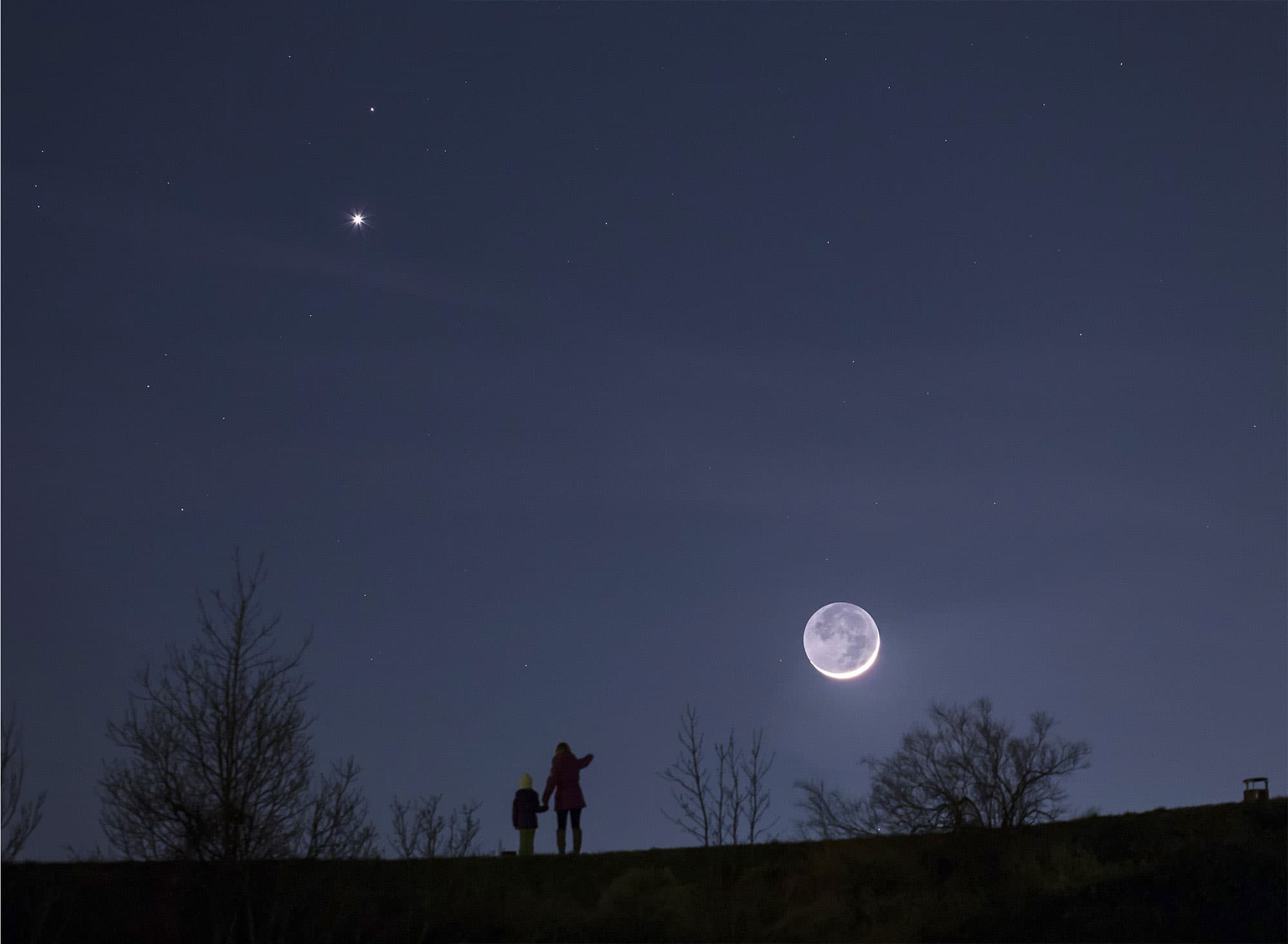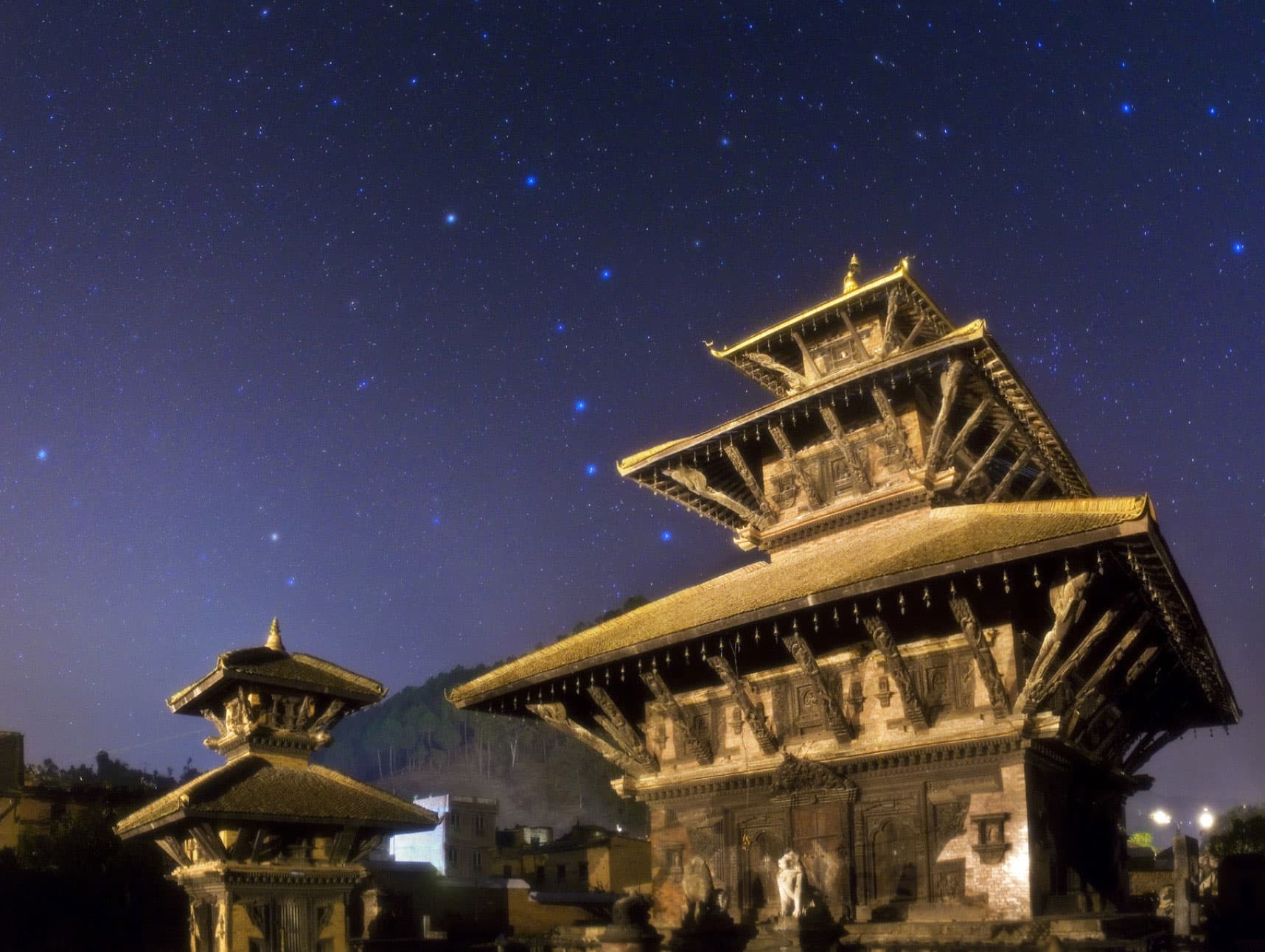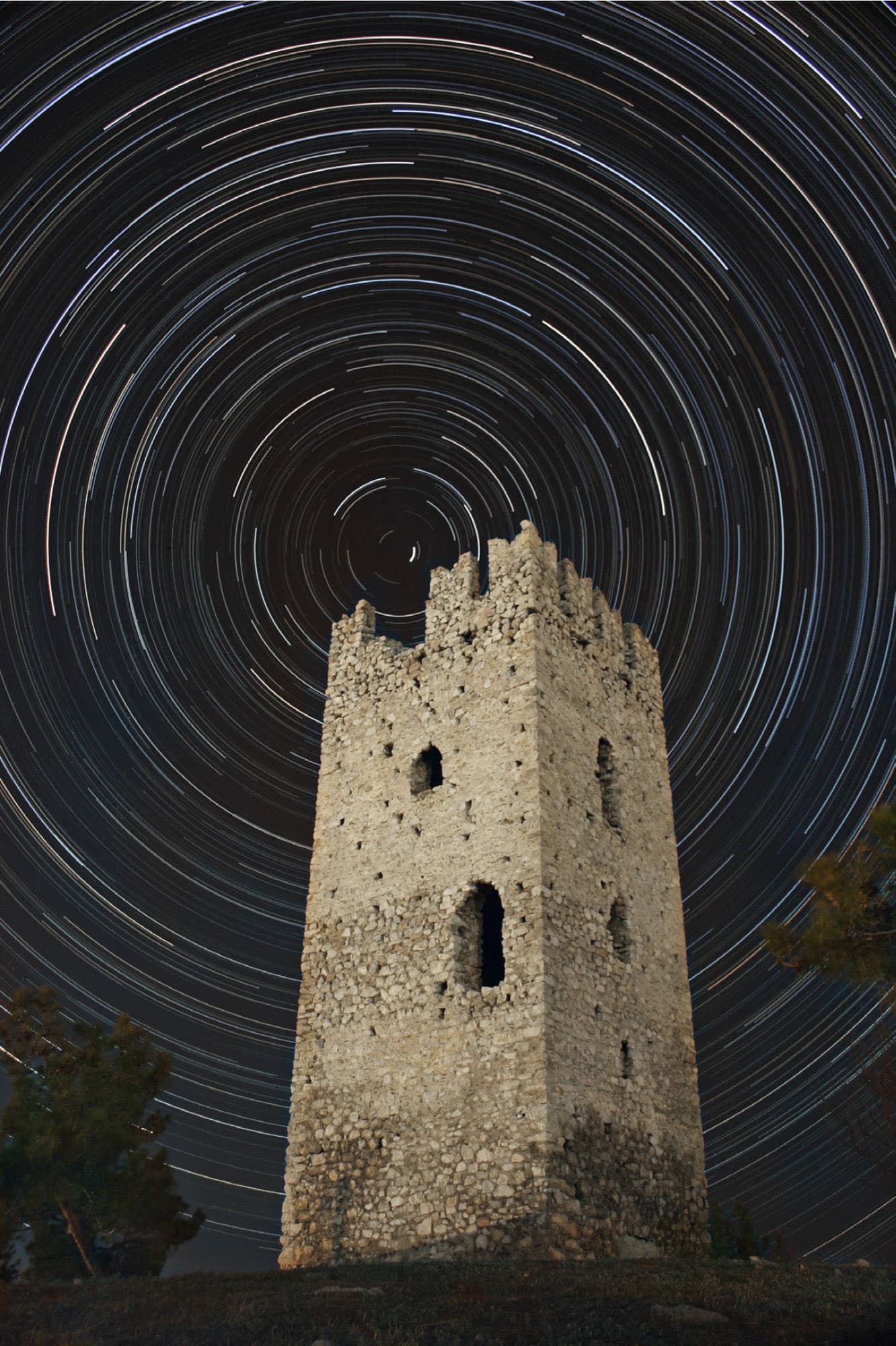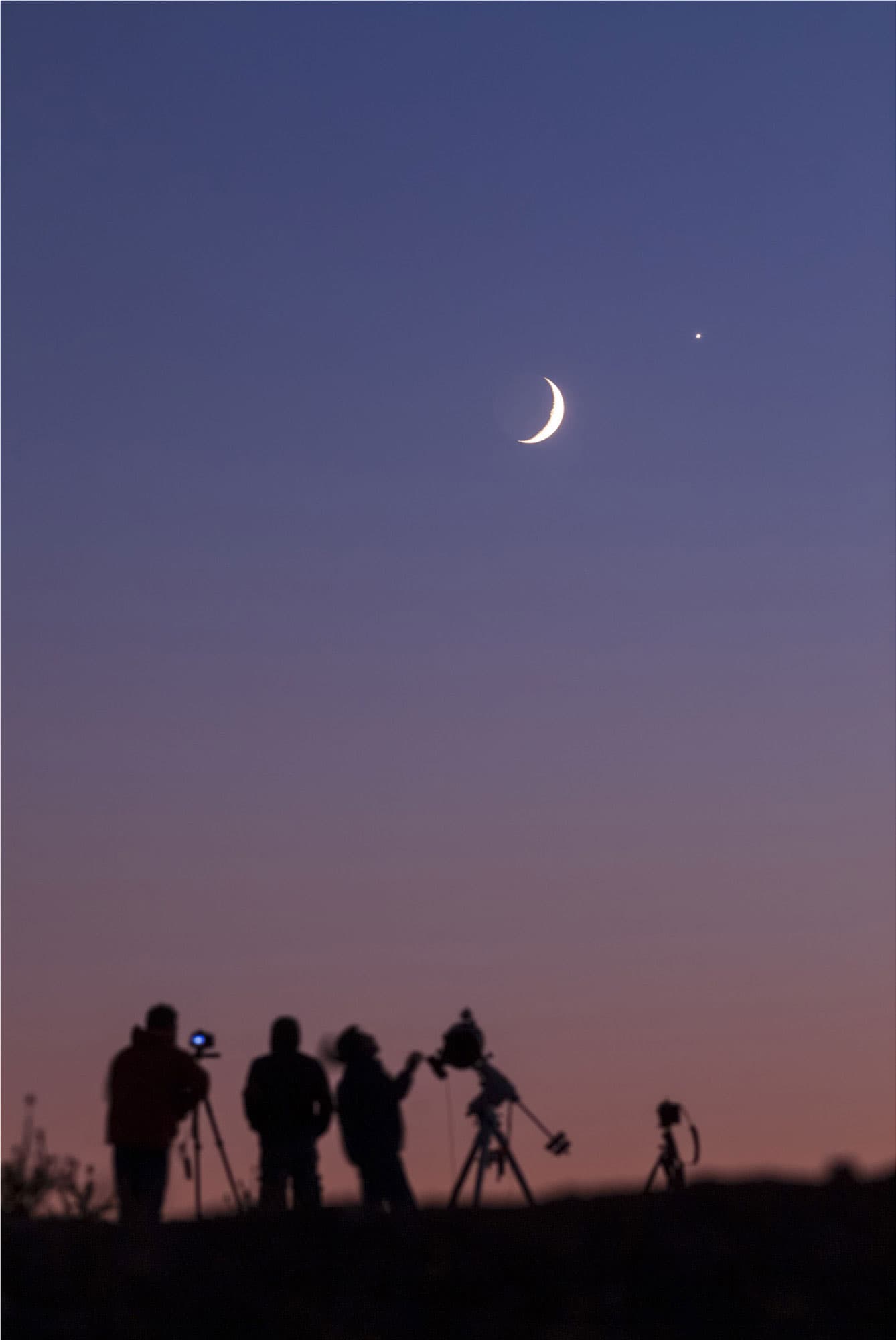CHAPTER 01
One People, One Sky
THERE IS MORE THAN BEAUTY CAPTURED IN THESE NIGHTSCAPE PHOTOGRAPHS – EACH IMAGE ALSO REVEALS A STORY
Hovering in the Boston twilight, the elegant new moon beguiles onlookers just hours after skygazers in Iran have admired its thin form. That same crisp crescent hangs gracefully above the Vatican’s domes, just as it inhabits the skies over Jerusalem’s Temple Mount and the Shwedagon Pagoda in Myanmar. This single celestial element is a shared window for every one of us. Our moon connects us to distant cultures – to every poet, writer and artist who has been inspired by its mesmerizing glow. The same moon that appears in Vincent van Gogh’s iconic painting ‘The Starry Night’ traverses our skies month after month, a new wonder for all to see. It skims the western horizon above the panoramic town of Safranbolu in Turkey; an hour later, it’s bathing the shores of Hungary’s Lake Balaton in romantic moonlight. Yet another hour passes, and with the arrival of sunset in Paris, the moon is shining in the dark-blue sky over the City of Light. Moments later, just before the fall of night starts its journey across the Atlantic Ocean, the sky above London is already dark, with the moon suspended beyond the capital’s iconic Big Ben.
Elsewhere, in North America’s Rocky Mountains, the magnificent Milky Way in zodiacal constellations Scorpius (the Scorpion) and Sagittarius (the Archer) spans the sky above the Grand Teton National Park. That same night, it glitters above Algeria’s Tassili n’Ajjer National Park, with its endless sand dunes and giant rock formations, in a pitch-black moonless night deep in the Sahara Desert. In places unspoiled by light pollution, the Milky Way galactic core is still visible all the way across North Africa to the grasslands of Europe, though lower on the horizon.

Lisbon PORTUGAL
Planet Mercury and a thin crescent new moon low on the horizon at dusk above the Tagus River and the city lights of Lisbon.
Nightscapes capture far more than the beauty of the places they depict, for each image also reveals a story. There are tangible connections here, where the Earth meets the sky and art merges with science, but something more lies beyond. As a collection, these photographs connect the living with an ancient heritage, charting past histories against the constancy of the night sky – the landmarks of civilizations long gone beneath the vast ocean of the universe.
Most poignant, perhaps, are the photographs made using long exposures and time-lapse sequences. In these scenes, the stars appear to fill the whole sky, leaving graceful circular trails as testimony to their long night of travel. With the camera directed at one of the poles, the concentric trails centre around it, creating an immensely bright rainbow of stars. These stunning scenes remind us that Earth is a planet within a solar system, permanently rotating on its own axis as well as pursuing its own path around the sun.
In the northern hemisphere, the familiar stars of Ursa Major (the Big Bear) circle the North Celestial Pole above an ancient pagoda in Nepal, just as they do over the otherworldly spires and buttes of Utah’s Monument Valley in the United States. In the southern hemisphere, the smallest constellation in the entire sky, Crux (the Southern Cross), is the most familiar sight. On a crystal-clear night over the Pacific Ocean, from a hidden paradise in the Cook Islands, this constellation rises high above the southern horizon, its lowest star pointing towards the unmarked South Celestial Pole. Thousands of kilometres away, but on a similar latitude, the same constellation appears above the Atacama Desert in Chile. These views are shared by many, unhindered by borders or boundaries. Back on Earth, boundaries have long been associated with territory – fought over and shifted in the name of politics, religion, economy or race, but it is the view of our planet from space that reveals the true nature of our cosmic home – a borderless world divided only by land and sea. The same can be said in reverse: the night sky above us – a view that is accessible to every single person on the planet – has no visible borders either. Under this single roof, we all belong to one family inhabiting one single planet.
HORIZONS
For nightscape photographers, day-to-day life is far from conventional. They visit places when no one is around, entering national parks just as everybody else is leaving. A day’s work begins as night starts to fall, often in freezing temperatures, while the rest of the world is settling down to a night’s relaxation in front of the TV. But when there is true passion for the work, this absence of a normal lifestyle is a sacrifice worth making. For the nightscape photographer, the night sky is a second home. It brings opportunities for travel and forges deep-rooted connections with the natural world. Through their work, these photographers are also able to have a profound impact on others, inviting viewers to engage with a part of the natural world that so often goes unnoticed.
The US National Parks Night Sky Program has been incredibly successful in preserving starry skies above magnificent natural landscapes. In the state of Wyoming, the two large neighbouring parks, Grand Teton and Yellowstone, are fine examples of this. Far from any major cities and with very few streetlights in the area, the night skies stun visitors to this bear-inhabited territory, where the mountains and the galaxy roar together. One of the most compelling scenes is the rugged Teton mountain range in Wyoming, just one stretch of the Rocky Mountains that snake their way through western Canada and the United States. At 4,200 m (13,800 ft), Grand Teton is the tallest mountain in this range.

Grand Teton Mountains, Wyoming USA
A last-quarter moon rises at midnight in July, illuminating the Grand Teton Mountains, while the bright summer Milky Way, still prominently visible in constellations Scorpius (the Scorpion) and Sagittarius (the Archer), spreads out over the lights of nearby town Jackson. In the middle, burning brightly, is Arcturus and, on the right, facing north, is the Big Dipper, the prominent figure in the constellation Ursa Major. The green and red bands that resemble aurorae are in fact airglow – natural emissions in Earth’s upper atmosphere.

Vatican City ITALY
For a brief moment after sunset, the thin crescent of a new moon appears between the clouds on the horizon above Vatican City. The moment is fleeting – captured here using a telephoto lens from a vantage point in Rome. The distance enables the photographer to align the rising moon perfectly with the massive 42 m (140 ft) dome of St Peter’s Basilica.

Veszprém HUNGARY
Sharing the wonders of the night sky with her child, a mother points to the new moon on the evening of the vernal (spring) equinox. The elegant triple conjunction of Venus (the brightest point), Mars and the crescent moon appears over the western horizon.

Mount Jiuhua CHINA
Mars, at its brightest, and the summer Milky Way from Mount Jiuhua in Anhui province, one of the four sacred mountains of Chinese Buddhism. This rich landscape is known for its ancient temples. During the golden periods of the Ming and Qing dynasties (fourteenth–nineteenth centuries), there were as many as 360 temples. Some 5,000 monks and nuns may have gazed at this same view of the Milky Way on nights gone by.

Panauti NEPAL
The Big and Little Dippers are a common sight in the northern hemisphere night sky, appearing closer to the horizon in low latitudes and almost overhead in the far north. These are the stars of Ursa Major and Ursa Minor, photographed here above the delicate wooden architecture of Indreshwar Temple, one of the largest and tallest pagoda-style temples in Nepal. Dating from 1294, it is also the oldest surviving temple in the country.

Isfahan IRAN
In this wide-angle photograph, the conjunction of the moon and Venus is seen at dusk from the World Heritage site of Naghsh-e Jahan Square, Isfahan. On the southern edge of the square is the Shah Mosque (Royal Mosque), built during the Safavid period in the early seventeenth century, a masterpiece of Islamic architecture. Much of its splendour lies in the beauty of its seven-colour mosaic tiles and calligraphic inscriptions. The port of the mosque, itself measuring 27 m (90 ft) tall, is crowned with two minarets, each 42 m (140 ft) tall.

Mount Fuji JAPAN
Swans sleep on a lake in Yamanashi prefecture, Japan, with the symmetrical volcanic cone of Mount Fuji rising in the distance. A symbol of Japan and the highest mountain in the country at 3,800 m (12,400 ft), Mount Fuji last erupted 300 years ago. Above this early spring evening scene, stars of the winter constellations are about to set, from Taurus (right) to Orion (centre) and Canis Major (left) with its dazzling star, Sirius.

Boston, Massachusetts USA
A crystal-clear night begins with this colourful dusk and the new moon hanging above the Atlantic Ocean and Boston skyline, pictured here from several miles away. This photograph, made using a one-second exposure, reveals more than the thin crescent; it also shows the night-time darker face of the moon. Made visible due to the light emitting from Earth, it is easy to see with the naked eye when the sky becomes dark enough. This subtle light is called ‘earthshine’. First described by Leonardo da Vinci in the sixteenth century, it is also known as the ‘da Vinci glow’.
POLAR
Long-exposure photographs of the night sky create wonderful trails of stars. These unique visuals reinforce that timeless constancy of the sky above a world in which civilizations come and go. Freezing several hours of night-time in a single image, such photographs are bold illustrations of the nonstop passage of time, offering glimpses into our home planet’s speedy rotation in space. Rarely do we consider, as we go about our daily lives, that Earth’s rotation is transporting us faster than a jet aeroplane.
When directed towards the celestial north or south pole, a long-exposure view aligns with Earth’s rotation axis, resulting in beautiful circumpolar star trails. In the northern hemisphere, the relatively bright star Polaris lies at the centre of these trails, whereas in the south the centre of the trails are empty, with no polar star. The location of the pole in these images gives an indication of latitude. The higher the pole in the image, the closer the location is to the polar latitudes. In the case of the North Pole, Polaris appears at zenith (overhead), and will be right on the horizon at the equator.
In technical terms, some of these photographs – such as the one featured opposite – are single, long exposures on film or have been made using a low-sensitivity setting on a digital sensor. Others have been made using time-lapse photography, where a series of shorter exposure photos are combined digitally to create the final image. This allows a higher sensitivity setting that reveals more stars. Very short individual exposures also help to avoid the glare of bright foregrounds and city skies.

Uusimaa FINLAND
On this exceptionally cold, clear, starry winter’s night in a sub-Arctic forest, a five-hour single exposure on film captures sharp tree branches and the rotation of our planet above them. Photographed from a latitude of 60 degrees north, a few hours’ drive from Helsinki, Polaris appears high in the sky. The exposure is long enough to show that even Polaris is affected by the sky’s rotation – the North Star is not exactly on the pole, but about 1 degree away. Theoretically, had this exposure lasted a full twenty-four hours, and had the night been never-ending, the circles would be complete, formed by the 360-degree rotation of the planet.

Damghan IRAN
This five-hour combined exposure of stars rotating around the geographic North Pole shows the Caravanserai of Qusheh at Damghan, Iran. It once stood on the edge of the ancient city of Qumis, which is now buried beneath the desert. Several hundred years ago, such roadside caravanserais were a common sight throughout the Middle East and central Asia, and provided resting places along the Silk Road – the network that supported the flow of commerce, information and people on principal trade routes between Asia, North Africa and southeastern Europe. Some 500 caravanserais remain in Iran today. Many of them were built during the reign of Shāh Abbas I of Persia, around 400 years ago.

Euboea & Cape Sounion GREECE
Here are two similar polar star trails above Greek landmarks, each a three-hour combined exposure with Polaris near the centre. Both show clearly the various colours of the stars – a rough indication of their surface temperatures, with hotter blue stars and cooler red ones. On the left is a Byzantine-period watchtower at Mytikas on Greece’s second-largest island, Euboea. On the right is the impressive abandoned Church of Saint Ioannis Prodromou from 1919, not far from the ancient Temple of Poseidon at Cape Sounion.


Paris FRANCE
Made from a sequence of short exposures, this image shows how it is possible, technically, to reveal stars in some of the world’s largest and brightest cities on a clear, transparent night and at the right time. This particular image of Paris was made using shots taken from 2 a.m., a time when the lights of the Eiffel Tower and most other monuments in the city are turned off in order to save energy. The stars of the Big Dipper are visible to the left of the tower’s top and Polaris is to the right.
STARGAZING
We are connected to the night sky in many ways. It has always inspired people to wonder and to imagine. Since the dawn of civilization, our ancestors created myths and told legendary stories about the night sky, elements of which became embedded in the social and cultural identities of many generations. On a practical level, the night sky helped past generations to keep track of time and create calendars – essential to developing societies as aids to farming and seasonal gathering. For many centuries, it also provided a useful navigation tool, vital for commerce and for exploring new worlds. Even in modern times, many people in remote areas of the planet observe the night sky for such practical purposes.
The night sky is a freely available laboratory to all nations. It helps us to understand the universe and our place within it, to investigate our origin and our destiny. It inspires every individual to consider more than the here and now, to be curious beyond our physical needs and simply to be different from other species on this planet.
At the most basic level, the night sky forms half of our night-time environment. Its raw beauty resonates with anyone who cares for nature. Some simply enjoy gazing at the starry sky with the naked eye, not necessarily knowing the constellations, nor the physics behind the various celestial phenomena. Others are avid stargazers and amateur astronomers who passionately study every corner of the sky, growing to know it better than maps of their own cities. Regardless of our level of interest, our common passion for this unifying roof above our planet can break boundaries between us.

Färnebofjärden SWEDEN
On a late-summer’s night, family members gaze at the night sky in a forest clearing at Färnebofjärden National Park. Some 140 km (90 miles) north of Stockholm, this spot beside the Dalälven River is far enough from the metropolitan lights to see a fairly dark sky. On this occasion, the family has a pair of binoculars and a small telescope to explore the sky beyond the limits of the naked eye.

Morondava MADAGASCAR
A small group of local people gather to marvel at the night sky in this little village on Coco Beach in Madagascar. In the distance, lights from the city of Morondava glow on the horizon. Above them, the scene opens onto the southern sky along the galactic band, from the Carina Nebula to the Crux constellation, and includes the bright stars Alpha and Beta Centauri.

Alborz Mountains IRAN
Presenting an elegant celestial conjunction, this photograph shows the crescent moon in a close pairing with the bright planet Venus in the evening twilight above a group of skygazers and astrophotographers. While there are only around 10,000 recorded professional astronomers in the world, the number of amateurs who are members of astronomy clubs or frequently use a telescope exceeds 1 million.